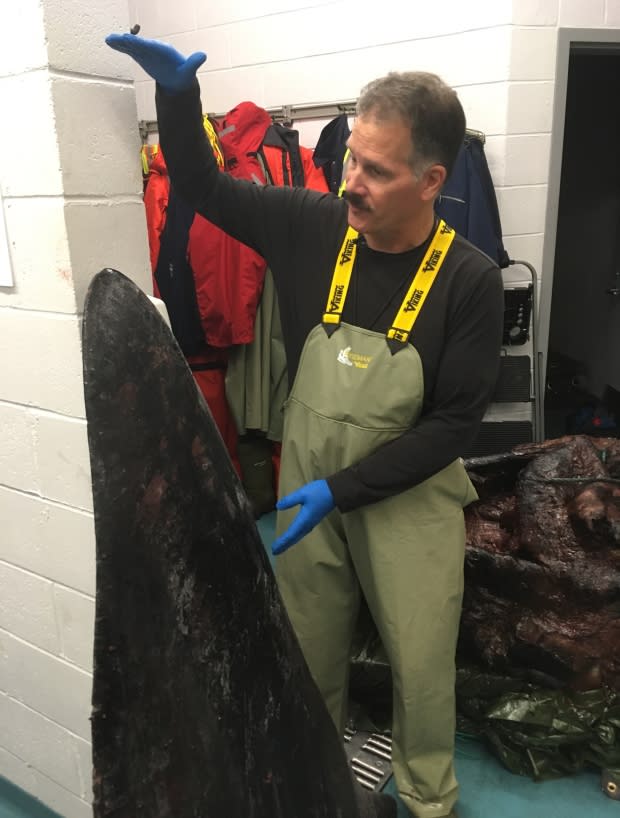Dead orca's life is being revealed through DFO necropsy
The skull, dorsal fin and intestines of an orca that weighed an estimated 4.3 tonnes present a rare research opportunity for scientists in St. John's, says the Department of Fisheries and Oceans.
Entangled in a gill net near Beaumont, Notre Dame Bay in early October, the creature, still not fully grown, drowned. Parts of the animal are being examined in a DFO laboratory in St. John's.
"It's very sad to see a large adult animal die like this in a gill net because you can imagine it's an air-breathing animal like us. When they did the necropsy they found water in the lungs," said DFO research scientist Jack Lawson.
Sad loss and scientific opportunity
The whale's untimely death, though, has provided a research opportunity for scientists.
We know how it died and it's going to provide samples of a species that we don't often get a chance to look at. - Jack Lawson
"Luckily for us it was towed to the wharf in Beaumont. It was a fresh animal, we know how it died and it's going to provide samples of a species that we don't often get a chance to look at."
Scientific technician Jessica Foley used scissors to cut through the whale's intestine looking for otoliths, the ear bones of fish, as well as bones from seals and porpoises to determine what the orca may have been eating.

Lawson said they look at the gut from a health perspective as well, looking for tapeworms and other parasites and for signs of cancers or internal bleeding.
A tooth will be extracted and sawed in two, and rings counted to determine age.
Lawson says it's a sub-adult male.
"people look at this dorsal fin and think, 'wow, this is 1.3 metres long, it's a very tall dorsal fin,' but this is not an adult male. An adult male will grow another one or two tonnes in weight."

Orcas doing well overall in N.L. waters
Lawson says the department knows of 67 killer whales in N.L. waters but there could be a couple hundred in total that range from Labrador to the northeast United States.
Most of this population might be plying the waters off Newfoundland and Labrador because of the rich marine life. Lawson said they eat things like white beaked dolphins.

"We've seen animals on the south coast that have killed minke whales and then brought the dorsal fin over and offer it to people in boats because they like to share their food. We've also seen them feeding on groups of fish."
A few weeks before the whale died, Lawson said, a tour group in Trinity Bay took a picture of a pod that included a sub-adult. He plans to see if the markings on the whale's dorsal fin match the photo.
The skull, once stripped of its flesh, will be used as a teaching tool.
DFO says it'll share further results of the necropsy once they are available.
Read more from CBC Newfoundland and Labrador


